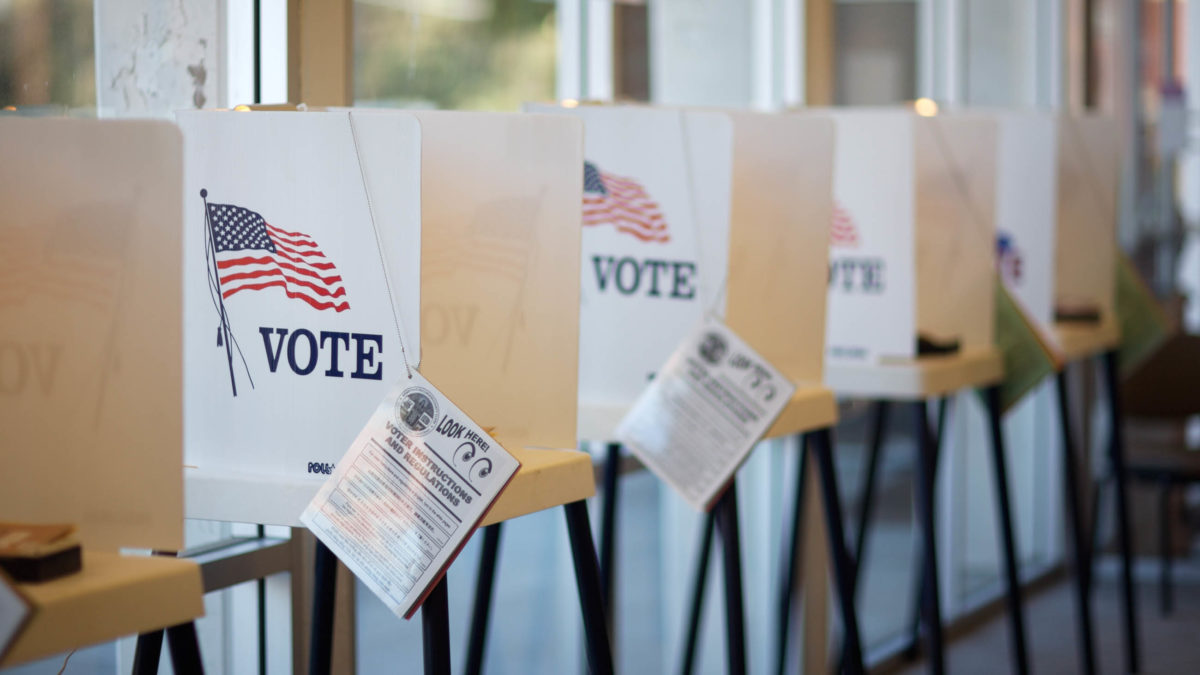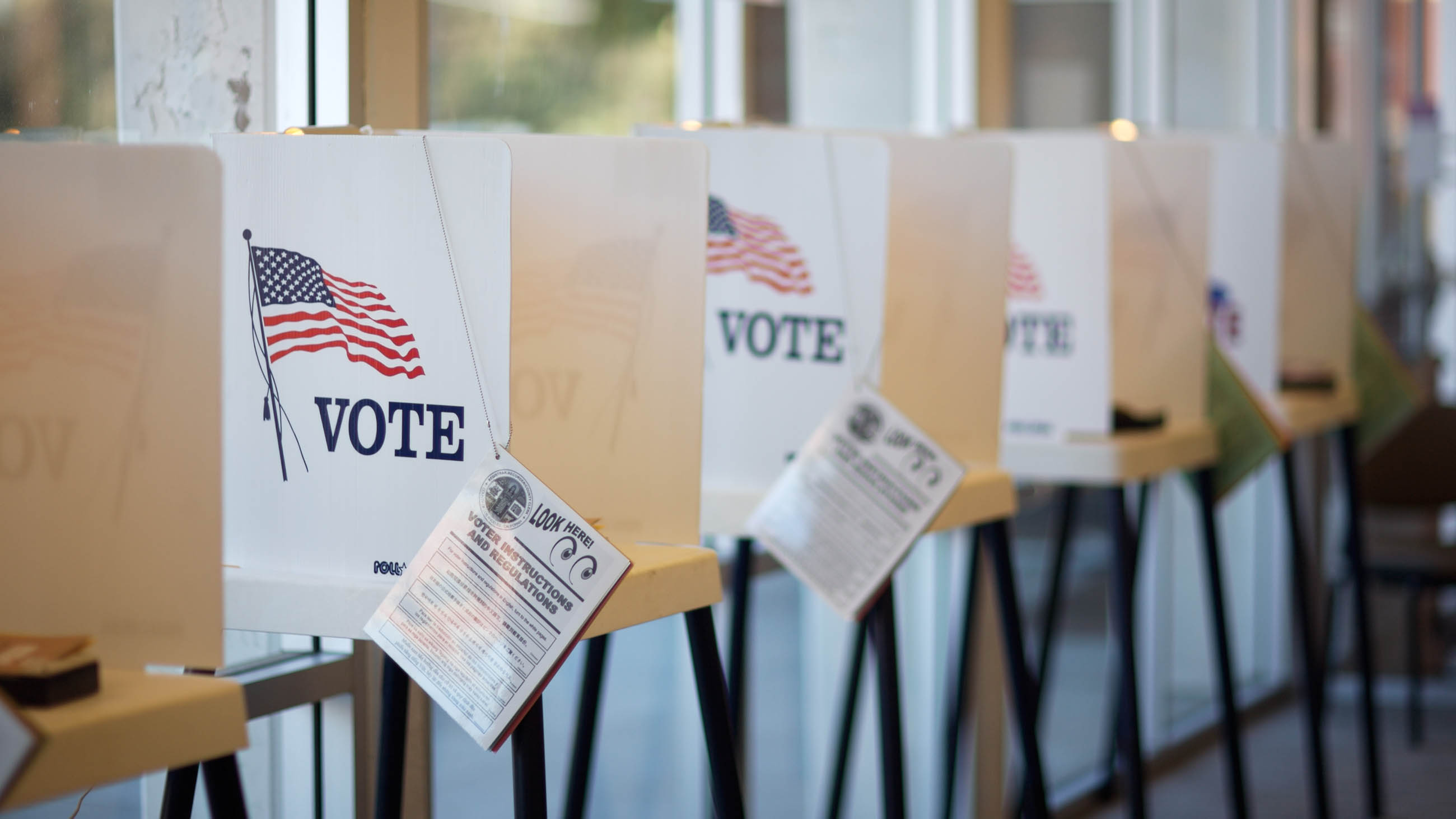In the Final Push to Mobilize Voters, It’s the Personal Touch That Counts
With less than a week to go before the 2016 presidential election, Americans across the country are on the receiving end of last-minute “get out the vote” phone calls, emails and letters from both campaigns urging them to head to the polls next Tuesday. Increasingly, this desperate push to find and mobilize voters has created a lucrative opportunity for companies like DSPolitical, TargetPoint, and CampaignGrid, which offer “get out the vote” services and “micro-targeting” strategies for identifying and nudging voters to support one candidate or another.

What gets people to the polls? Definitely not robocalls, but research provides a few insights.
Visual: iStock.com
But according to Donald Green, a professor of political science at Columbia University who studies the effectiveness of “get out the vote” strategies, many companies in this space rely on tactics and methodologies that haven’t been empirically proven, and they have often been quite wrong in predicting who might be sympathetic to political messaging. “It’s a totally unregulated business and you can say anything you want,” said Green, who spoke this week at a seminar hosted by the Abdul Latif Jameel Poverty Action Lab at M.I.T. “It’s the Wild West.”
Jordan Lieberman, who heads up CampaignGrid, which is the politics division of the marketing firm Audience Partners, says his company’s get-out-the-vote strategies have been thoroughly studied. “I have clients that spend a million dollars a day and I promise you they spend a hefty amount on research,” he says. Critics just don’t see it, Lieberman says, because the research is not public.
Jim Walsh, co-founder and chief executive of DSPolitical, said he agrees with Green on some of his conclusions, and that his company encourages clients to incorporate many of the strategies that he and others consider most effective in non-digital, get-out-the-vote (GOTV) campaigns. “Everyone agrees that GOTV efforts must be personalized to have maximum impact,” Walsh said, adding: “Due to the uniqueness of our technology, campaigns are empowered to target specific universes of voters with personalized messages.”
Of course, the efficacy of 11th-hour campaign tactics have been a matter of debate in political science for a long time. Green says he is striving to bring scientific rigor to the assumptions and strategies that some voter-targeting firms are using. The specifics are often shrouded in words like “proprietary” and “patented,” Green suggested, even though their databases are based on publicly available voter registration information.
The reality, Green and others have found, is that a good deal of the money spent on targeting voters is often wasted.
Using randomized control trials, a gold standard in scientific research where experimental groups are randomly assigned treatments, researchers like Green are trying to separate the rhetoric from the statistics, and they are beginning to figure out what works and what doesn’t for mobilizing voters. Their key insight: The vast majority of phone calls, emails, and mailbox stuffers aimed at boosting voter turnout don’t work unless they are highly personal. The problem: “Personal” is very hard to scale-up.
Take the popular “robocalls,” which are now directly interrupting thousands of voters across the land with pre-recorded messages. While a campaign might spend a dollar per head attempting to nudge voters with such calls, there’s little evidence to suggest that they inspire people to head to the polls, according to Green’s research. On the other hand, he says, more personal conversations with real people have been proven to be more effective — but they take longer and are, of course, much more expensive to pull off.
This echoes the findings of other research in the behavioral sciences, which suggest that personal interactions — whether it’s simply asking someone if they plan to vote, or deploying peer pressure (“We’re all voting, are you?”) — can have measurable impacts on the voting behaviors of individuals. Studies also suggest that framing the act of voting as a matter of self-identity can have an impact.
“Volunteer phone banks seem to be pretty effective. If you can’t go off to a battleground state, calling the people you know, or could target, and having a heartfelt conversation, is probably pretty darn effective as a campaign tactic and certainly cost-effective,” said Green. “On the other hand, delegating that to a commercial phone bank that’s going to do a lot of perfunctory calls, cranked out 30 an hour, that’s going to be only minimally effective.”
Mass emails are also generally ineffective at boosting voter turnout, studies conclude. One 2007 analysis summarizing seven field experiments during the 2004 presidential election found that email campaigns resulted in no increase in voter registration or turnout.
The exception to this rule, as with phone calls, were highly personalized email messages.
And what about good old-fashioned snail mail? Green suggests that non-partisan encouragements have been mildly effective. But the sense from more than a dozen studies on the matter, he adds, is that overtly partisan mailers are a waste of time and money.
“When you send people a truckload of advocacy mail about the importance of the election and the issues at stake, blah, blah, blah,” Green said, “it has no effect on turnout.”
CampaignGrid’s Lieberman doesn’t necessarily disagree, and he noted that Green is one of the best researchers in the field.
“I have admired Donald Green’s work for over a decade,” Lieberman says. “All his research points to the fact that the only thing that really changes votes at more than a 2, 3, 4 percent degree is knocking on the door, looking at people in the eye, and asking for their vote.”
This post has been updated to include comment from Jim Walsh, co-founder and chief executive of DSPolitical.











Comments are automatically closed one year after article publication. Archived comments are below.
Hi Walter, sorry for the delay! You can check out the control groups for one of Green’s studies here: http://isps.yale.edu/sites/default/files/publication/2012/12/ISPS00-001.pdf
The majority of voter turnout data, unfortunately, isn’t published in open-access journals or really journals at all. As Lieberman points out, these companies have data, it’s just private.
Your comparison to soft drink companies is very interesting. Ad budgets aside, it would be interesting to look at what level of “personalization” has worked for those kinds of products. Brand loyalty is cultivated over years if not decades. See: http://www.tandfonline.com/doi/abs/10.1080/09544120050007823?journalCode=ctqm19 Could the same behaviors apply to politics?
I’m curious as to what kind of control group was used.
Also, without personal outreach, wouldn’t this mean Pepsi, Coke, RC Cola, etc. should have equal market share?